Lesson Title: Using Islamic Patterns to Create Tessellations
Name: Janet Berry
Discipline: Visual Arts
School: Montgomery Blair High School, Montgomery County, MD
Grade Level: 10, 11, 12: Digital Art, 2-D Design Unit
Time Period: 3 90-minute periods
Breakdown of Lesson Components:
Day One (90 minutes): Visual Resources
• PowerPoint, video, and objects with tessellation designs will be shown and displayed.
• Students will go to websites for definitions of tessellations.
• KWL chart and “ticket to leave” on what is a tessellation.
Day Two (90 minutes): Demonstration
• Students will explore the Website link on how to make a tessellation in Appleworks and Geometer’s Sketchpad.
• Students will begin making their tessellations through guided practice.Day Three (90 minutes): Creation of Tessellations
• Students will complete their tessellations and turn them in to the teacher.
• Students will fill out a self-evaluation rubric and peer evaluations with their “Five o’clock Round the Clock Partner.”
Teacher Background:
A tessellation is a kind of mosaic. Since around 4000 B.C.E., tessellations
could be found in Sumerian cultures in clay slabs which became part of
a building’s structure. Egypt, Arabia, Rome, Persia, Greece, Byzantium,
Japan and China each have various shapes to make these repeated interlocking
designs around a vertex. The work of Islamic artists and their religious
views influenced the use of geometry and nature forms in their decoration,
as seen in the patterns in the Alhambra Palace in Granada, Spain. The
trade routes between the Middle East and Europe brought about an exchange
of goods and ideas between the cultures. The introduction of patterned
rugs that are not quite tessellations of Turkish and Middle Eastern carpets
can be seen in Renaissance paintings. Also of note is the use of calligraphic
script in both painting and sculpture between 1450 and 1750. These designs
can be found on floors, walls, ceilings, and buildings, in ceramics, textiles,
wallpaper and stained glass windows. Twentieth century artists have used
tessellations in their work, including Escher, Vasarely and Riley. The
rich patterning and overlapping natural forms of William Morris and others
in the Arts and Crafts movement show the influence of the designs of Islamic
Art.
Specific Objective:
Students will be able to make a tessellation using Appleworks, Geometer’s
Sketchpad or Adobe Photoshop CS, manipulating the drawing and formatting
tools to make their shapes and arrange them into an original pattern.
Essential Question:
How do ideas and commodities cross cultural regions?
Enduring Understanding:
• People create art to serve specific useful purposes.
• People create art to communicate and teach history, values and
beliefs.
• People create art to adorn themselves and their surroundings.
• People use their environment as subject matter for their artwork.
• People create art to record history.
• Contemporary artists are often influenced by art from other cultures.
Maryland Learner Outcomes and Core Learning Goals:
Outcome I C: Design, Style, and Meaning
• Students will apply design principles to interpret the ideas of artists from the late Middle Ages and Early Renaissance time period, choosing design patterns from ceramic, metalwork, glassware, textiles, architecture and portraiture.
• Students will transform the realistic images and abstract patterns and text into seven balanced compositions.
• Students will describe and analyze the compositions they create as they relate
to the work done in the Middle East, China and Renaissance Europe and
compare them to present day design and architecture.
• Students will use art vocabulary in describing the art period and the artists.Outcome II C: Style and Content
• Students will describe, analyze and judge the style and content of the visual work chosen.
• Students will analyze their interpretive work as it relates to the style and content of the selected artists.Outcome II D: Interdisciplinary Connections
• Students will process information about ideas and concepts from visual art, literature and music of the specific time period.
Outcome III A: Media—Experimenting with Ideas and Materials
• Students will use the computer programs Appleworks and Adobe Photoshop to create a pattern using various tools to create shapes, space and color in geometric, natural or realistic form.
• Students will learn how to create a tessellation viewing the patterns from the Middle East, the Alhambra and repeating patterns used by M. C. EscherOutcome IV C: Personal Criteria—Artistic Choices Leading to Personal Style and Significance
• Students will create a pattern inspired by the work of Islamic craftsmen and contemporary artists who were inspired by the trends of the time in which the original work was created.
• Students will design a pattern that reflects their personal aesthetic choices.
Vocabulary/Concepts:
http://www.lacma.org/islamic_art/glossary.htm
http://www.coolmath4kids.com/tesspag1.html
http://mathforum.org/geometry/rugs/symmetry/
http://dimacs.rutgers.edu/~rkrane/tessell.html
http://iweb.tntech.edu/wpitelka/syllabi/design_vocab.htm
Materials/Resources (For Both Students and Teacher):
Videotape:
The Fantastic World of M. C. Escher. Directed by Michele Emmer. ASIN: 6303146767.
Texts:
Atil, Esin. Renaissance of Islam. Washington, D.C.: National Museum of Natural History,
Smithsonian Institution, 1981.Bloom, Jonathan and Sheila Blair. Islamic Arts. London: Phaidon, 1997.
Chipp, Herschel B. Theories of Modern Art: A Source Book by Artists and Critics. Berkley:
University of California Press, 1968.Escher, M. C. The Graphic Work of M. C. Escher. Trans. John E. Brigham. New York:
Ballantine Books, 1967.Gòmez, Emilio Garcia and Jesus Bermudez Pareja. The Alhambra: The Royal Palace. Albaicin
Sadea, Italy, 1966.Kleiner, F. S., D.M. Mamiya and R.G. Tansey. Gardner’s Art Through the Ages. 11th ed. Fort
Worth, TX: Harcourt College Publishers, 2001.McKinney Brenmer, Carla. Islamic Art and Culture (A Resource for Teachers). Washington,
D.C.: National Gallery of Art.Parry, Linda. William Morris Textiles. New York: The Viking Press, 1983.
Swann, Wim. Arts and Architecture of the Late Middle Ages: 1350 to the Advent of the
Renaissance. New York: Crescent Books, 1977.Web Resources:
Teacher list:
http://www.cap.nsw.edu.au/QI/TOOLS/index.htm
http://www.google.com/search?hl=en&lr=&ie=ISO-8859-1&q=ticket+to+leave%2BeduStudent/Teacher list:
http://library.thinkquest.org/16661/index2.html
http://www.asia.si.edu
http://www.textilemuseum.org
http://www.Luminarium.org
http://www.fordham.edu/mvst
http://www.islamicart.com/members/geometric.html
http://www.lacma.org/islamic_art/glossary.htm
http://www.metmuseum.org/Works_of_Art/department.asp?dep=14
http://www.artlex.com/ArtLex/ij/islamic.html
http://www.colostate.edu/Orgs/MSA/find_more/islart.html
http://mathforum.org/sum95/suzanne/cwtess.html
http://mathforum.org/sum95/suzanne/tess.gsp.tutorial.html
http://www.math.byu.edu/~lfrancis/readings302/Tesselation_with_CWS.htmlStudent Worksheets:
Plus/Delta Chart: A simple, inclusive strategy enabling students to consider the pluses (what went well) and the deltas (what you would like to see changed)
KWL Chart (Know, Want to know, and Learned): A chart that asks students to consider what they know, still would like to know, and what they have learned about a particular topic
Peer Evaluation worksheet
Objects:
Contemporary ceramic hotplate with a patterned design from Jerusalem
Blue and white contemporary plate and cup
Johnson stoneware
Taiwanese cup
Lesson Abstract:
Islamic patterns, or tessellations, influenced Christian Europe as a result
of the trade in luxury goods along the routes that were established during
the Middle Ages and the Renaissance. This trade resulted in an exchange
of ideas and goods between the East and the West. In this unit, students
will see the cross-cultural influences of patterns that were created on
textiles, ceramics, glasswork, metalwork and paintings in China, Japan,
the Middle East and Europe. They will note the continuing influence of
this cross-cultural exchange in Renaissance art and in contemporary architecture,
painting, prints, textiles, and product design.
Lesson Components:
Motivation/Warm-Up:
Class Day 1:
• Students will be shown slides of the Alhambra and given some websites to view.
• They will be shown a short clip of M. C. Escher’s tessellations from the video The Fantastic World of M. C. Escher.
• Students will be shown two contemporary objects (a blue and white cup and plate, and a ceramic hotplate with interlocking patterns from contemporary Jerusalem) that show patterning of Islamic influence.
• Students will go to the websites for vocabulary and will read about tessellations.
• Students will complete the Plus/Delta Chart. They will also write a “ticket to go card,” giving the definition of a tessellation and one example. Students will place these cards in their communications/grading folder.
• Homework assignment: Students will bring in examples of tessellations from various cultures that they have found in magazines, books, the newspaper, television and the Internet, or on objects such as ceramics and textiles.Modeling:
Class Day 2:
• Students will fill out the first two columns of the KWL Chart.
• Students will be shown a few slides of Islamic influence on art in the Late Middle Ages, the Renaissance and in the 20th Century.
• Homework examples of tessellations will be posted after the teacher checks them.Guided and Independent Practice:
Class Day 3:
• Students will view the examples of tessellations that other students chose.
• The teacher will demonstrate how to make shapes and how to design their own to create a tessellation using Appleworks and Geometer’s Sketchpad. Students will be referred to relevant websites and may be given a copy of the Appleworks instructions.
• Students will complete their own tessellations using their own shapes and colors to fill the spaces. Advanced students may use other programs and possibly include animation. The Teacher will guide them through the creation.Assessment:
Class Day 3:
• Students will complete the Peer Evaluation worksheet, assessing each other’s designs.Closure/Summary:
Class Day 3:
• In addition to the Peer Evaluation, students will be asked to write a short paragraph explaining how the Islamic and contemporary art influenced their thinking and design processes of their own tessellations. They will include technical problems that they solved and demonstrate to the class their solutions.
• Students will complete the last column in the KWL Chart—“What I Have Learned.”
Lesson Extensions:
This lesson could be extended for two more classes so that emphasis could
be placed on color and the use of the designs for specific purposes, such
as interior design, building materials, architecture, clothing design
and product design. Examples from Art Deco, the Arts and Crafts Movement
and contemporary Textile Design might be used. This lesson could be taught
without a computer by giving students a reading of the Mathematics of
Islamic Art from the Metropolitan Museum of Art, New York. Students could
draw their tessellations by hand.
Student Work:
TESSELLATIONS, student work inspired by Islamic art and M. C. Escher by
Alexander Alemar, Pria Arnard, Cody Burton, Amanda Chan, Liora Diamond,
Doris Houng, Simon Kanter, David Leiva, Madeline Raskulinecz, Benson Tran,
Jacob Wade, and Junquian Zhang. Click on an image below to enlarge it.
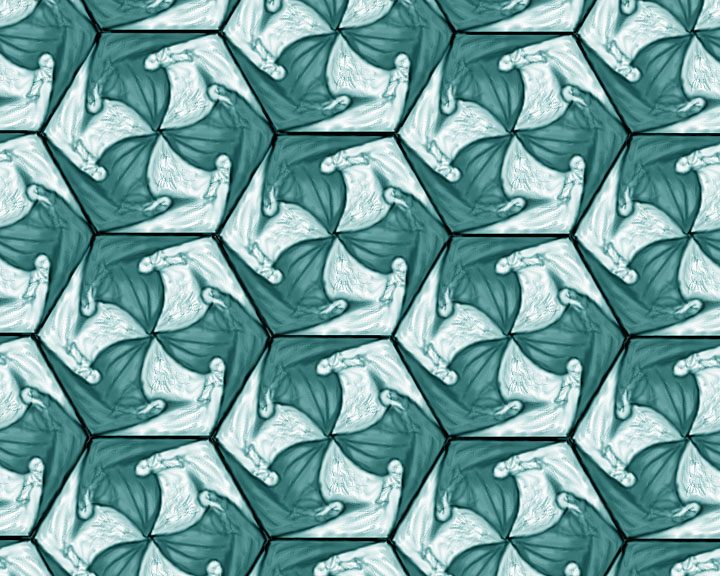 |
 |
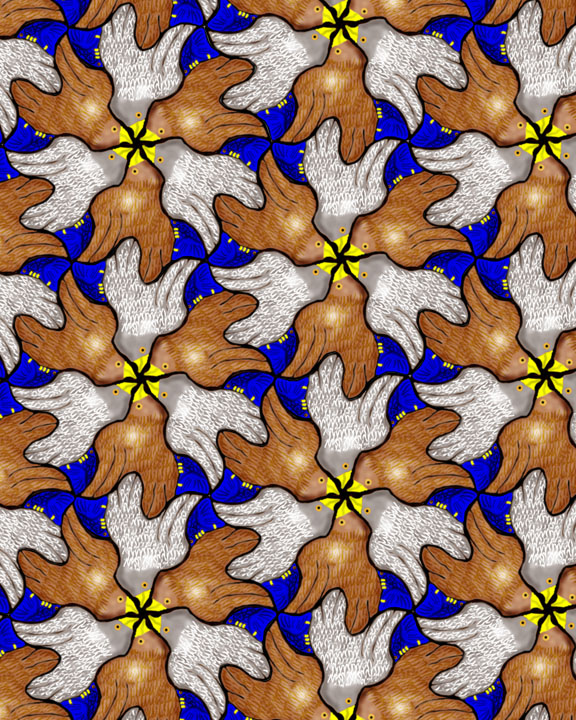 |
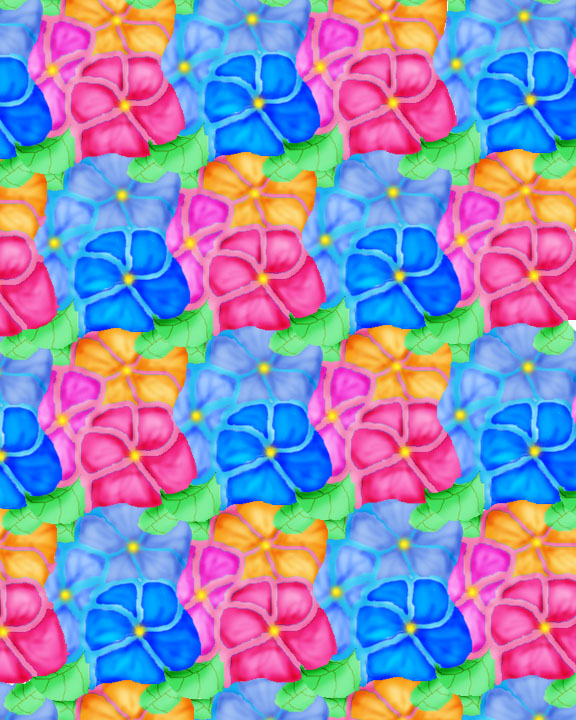 |
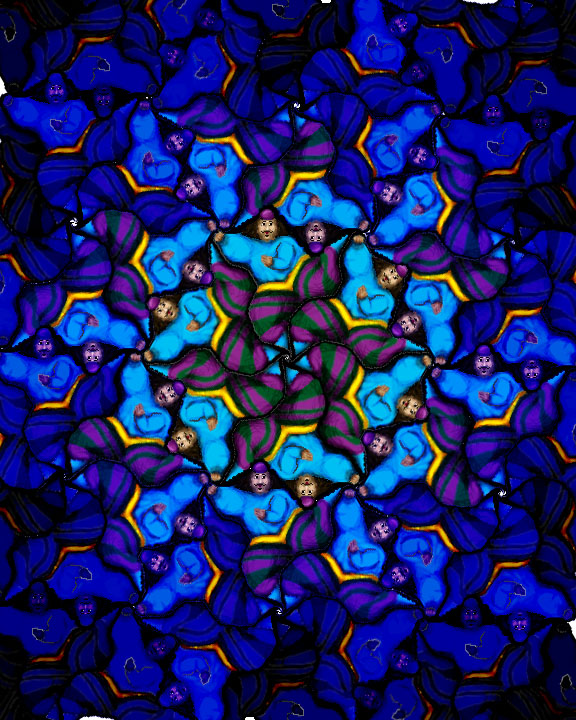 |
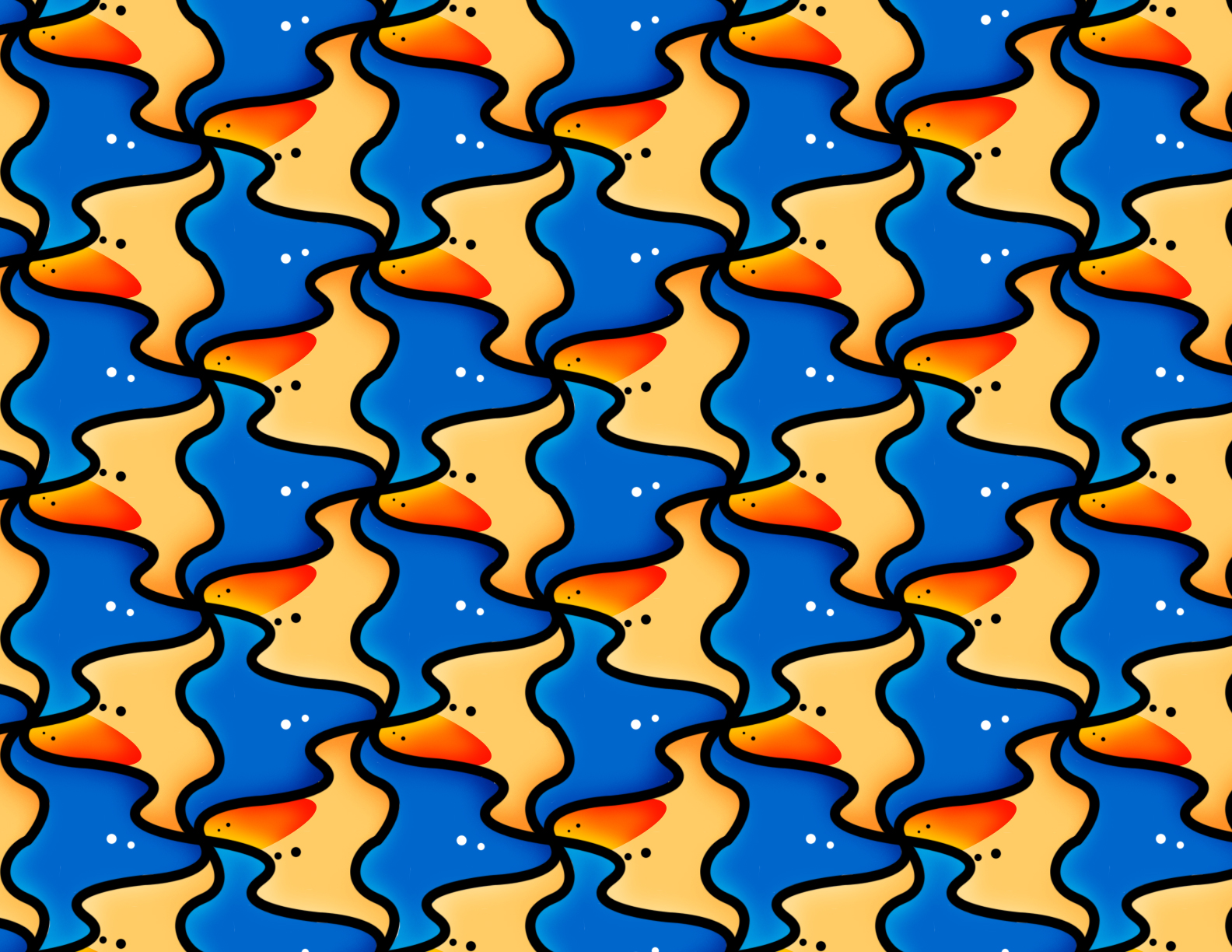 |
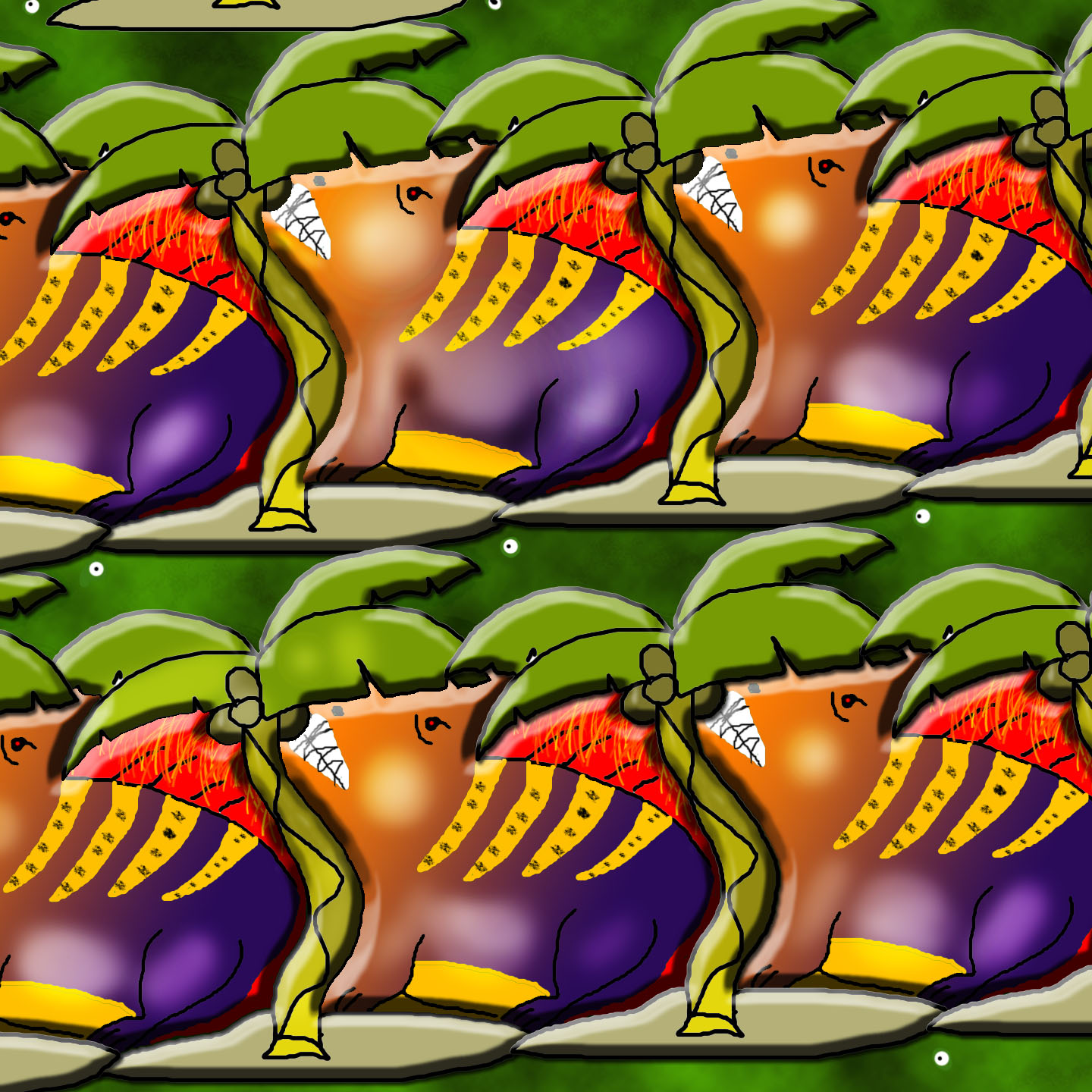 |
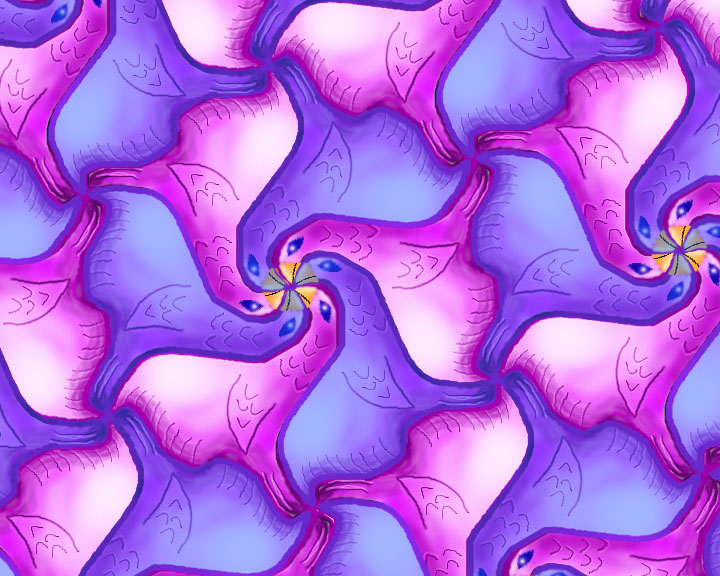 |
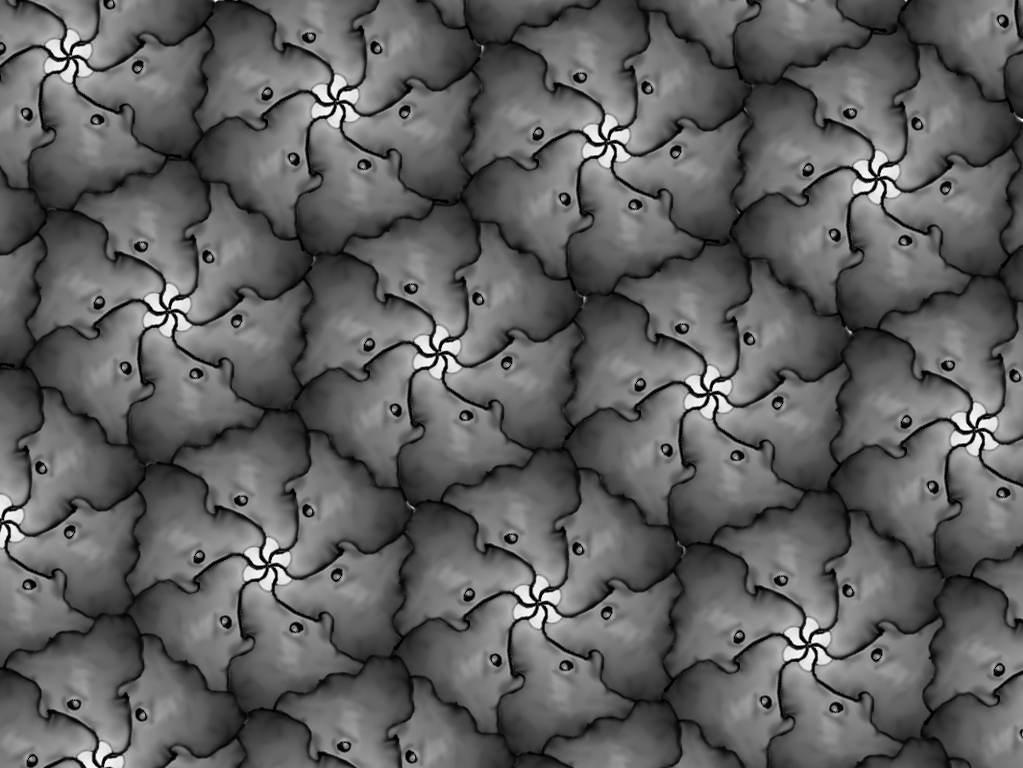 |